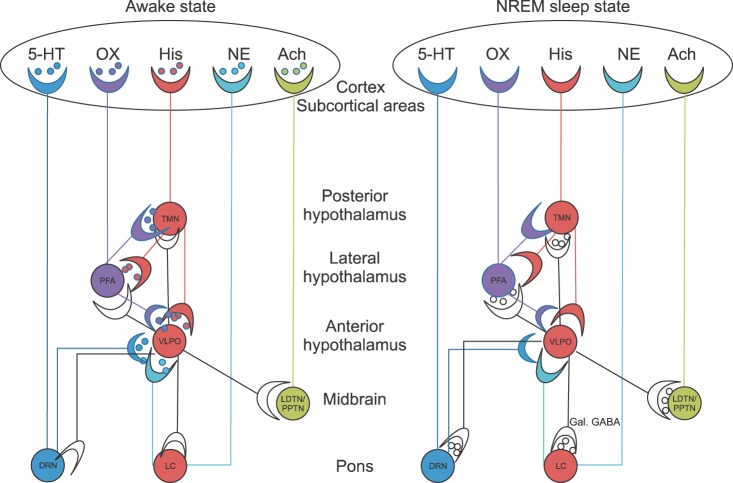Fig. 1.
Sedative and hypnotic mechanism of dexmedetomidine-related endogenous sleep pathways. If the arousal-promoting neurotransmitters - including histamine, as well as 5-hydroxytryptamine (5-HT), orexin (ORX, hypocretin), norepinephrine (NE), and acetylcholine (Ach) - are released from the tuberomammillary nucleus (TMN), dorsal raphe nucleus (DRN), perifornical area (PFA), locus coeruleus (LC), and laterodorsal tegmental nuclei (LDTN) and pedunculopontine tegmental nuclei (PPTN), respectively, into the cortex, wakefulness is promoted. When the wakeful state is converted to the NREM sleep state, the most characteristic feature of neurotransmitters in the brain is an increased release of galanin (GAL) and gamma-aminobutyric acid (GABA) into the TMN, LC, DRN, PFA, and LDTN/PPTN from the ventrolateral preoptic nucleus (VLPO). And other notable neurotransmitter changes are a decreased release of ORX from the PFA into the TMN and VLPO and a decreased release of histamine from the TMN into the VLPO and PFA. The release of all 5 arousal-promoting neurotransmitters decreases in the cortex as well.

